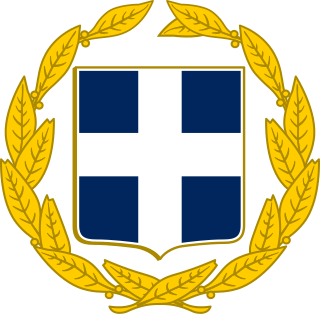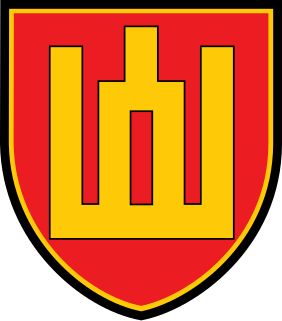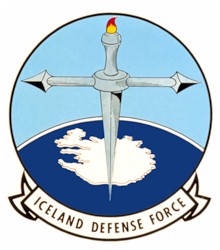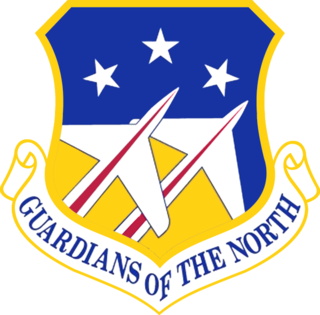
The Army of the Czech Republic, also known as the Czech Army, is the military service responsible for the defence of the Czech Republic in compliance with international obligations and treaties on collective defence. It is also set to support peacekeeping, rescue and humanitarian operations both within the national territory and abroad. Armed Forces consist of the General Staff, the Land Forces, the Air Force and support units.
Danish Defence is the unified armed forces of the Kingdom of Denmark charged with the defence of Denmark and its constituent, self-governing nations Greenland and the Faroe Islands. The Defence also promote Denmark's wider interests, support international peacekeeping efforts and provide humanitarian aid.
The French Armed Forces encompass the Army, the Navy, the Air and Space Force and the Gendarmerie of the French Republic. The President of France heads the armed forces as Chief of the Armed Forces.

The Defense Forces of Georgia, or Georgian Defense Forces (GDF), are the combined military forces of Georgia, tasked with the defense of the nation's independence, sovereignty, and territorial integrity. They consist of the Land Force, Air Force, National Guard, and Special Operations Forces. The Defense Forces are under overall leadership of the Minister of Defense of Georgia and directly headed by the Chief of Defense Forces.

The Hellenic Armed Forces are the combined ground, naval and air forces of Greece. They consist of the Hellenic Army, the Hellenic Navy, and the Hellenic Air Force.

The Italian Armed Forces encompass the Italian Army, the Italian Navy and the Italian Air Force. A fourth branch of the armed forces, known as the Carabinieri, take on the role as the nation's military police and are also involved in missions and operations abroad as a combat force. Despite not being a branch of the armed forces, the Guardia di Finanza is part of the military and operates a large fleet of ships, aircraft and helicopters, enabling it to patrol Italy's waters and to eventually participate in warfare scenarios. These five forces have military status and are all organized along military lines, comprising a total of 341,250 men and women with the official status of active military personnel, of which 165,500 are in the Army, Navy and Air Force. The President of the Italian Republic heads the armed forces as the President of the High Council of Defence established by article 87 of the Constitution of Italy. According to article 78, the Parliament has the authority to declare a state of war and vest the necessary powers in the Government.

The Armed Forces of the Republic of Kazakhstan is the unified armed forces of Kazakhstan. It consists of three branches as well as four independent formations. The National Guard, Civil Defense, Border Service and the State Security Service serve as militarized affiliates of the armed forces. The national defence policy aims are based on the Constitution of Kazakhstan. They guarantee the preservation of the independence and sovereignty of the state and the integrity of its land area, territorial waters and airspace and its constitutional order. The armed forces of Kazakhstan act under the authority of the Kazakhstan Ministry of Defence.

The Lithuanian Armed Forces is the military of Lithuania, acting as the principal deterrent against any security threat to the nation. It currently consists of 20,565 active personnel. Conscription was ended in September 2008 but reintroduced in 2015 due to concerns about the geopolitical environment in light of the Russo-Ukrainian War.

The Slovenian Armed Forces or Slovenian Army are the armed forces of Slovenia. Since 2003, it is organized as a fully professional standing army. The Commander-in-Chief of the SAF is the President of the Republic of Slovenia, while operational command is in the domain of the Chief of the General Staff of the Slovenian Armed Forces.

Military police (MP) are law enforcement agencies connected with, or part of, the military of a state.

The Iceland Defense Force was a military command of the United States Armed Forces from 1951 to 2006. The IDF, created at the request of NATO, came into existence when the United States signed an agreement to provide for the defense of Iceland, which has only limited defense forces.

The Icelandic Coast Guard is the service responsible for search and rescue, maritime safety and security surveillance, and law enforcement in the seas surrounding Iceland. The Coast Guard maintains the Iceland Air Defence System which conducts ground surveillance of Iceland's air space and operate Keflavik airbase. It is also responsible for hydrographic surveying and nautical charting.

A border guard of a country is a national security agency that performs border security. Some of the national border guard agencies also perform coast guard and rescue service duties.

The 85th Group is an inactive United States Air Force organization. Its last assignment was with United States Air Forces in Europe at Naval Air Station Keflavik, Iceland, assigned as a unit of the 48th Fighter Wing whose home station is at RAF Lakenheath, UK. It was inactivated on 28 June 2006.

Naval Air Station Keflavik (NASKEF) was a U.S. Navy station at Keflavík International Airport, Iceland, located on the Reykjanes peninsula on the south-west portion of the island. NASKEF was closed on 8 September 2006, and its facilities were taken over by the Icelandic Defence Agency as their primary base until 1 January 2011, when the Agency was abolished and the base handed over to the Icelandic Coast Guard, which has since then operated the base.
The Iceland Crisis Response Unit is an Icelandic para-military unit with a capacity roster of up to 200 people, of whom about 30 are active at any given time. It is operated by the Icelandic Ministry of Foreign Affairs. It is primarily designated for peacekeeping operations and was established in the 1990s to participate in operations and peacekeeping projects, including in support of NATO peacekeeping operations. That role later evolved into providing an appropriate forum for deploying personnel within other organizations such as with OSCE field missions as well as with UN DPKO, and organizations such as UNIFEM, UNRWA and UNICEF.
This is a brief overview of historical warfare and recent developments in Iceland.

The Estonian Defence Forces are the unified military forces of the Republic of Estonia. The Estonian Defence Forces consist of the Estonian Land Forces, the Estonian Navy, the Estonian Air Force, and the paramilitary Estonian Defence League. The national defence policy aims to guarantee the preservation of the independence and sovereignty of the state, the integrity of its land area, territorial waters, airspace and its constitutional order. Its main goals remain the development and maintenance of a credible capability to defend the nation's vital interests and development of the defence forces in a way that ensures their interoperability with the armed forces of NATO and European Union member states to participate in the full range of missions for these military alliances.

Icelandic Air Policing is a NATO operation conducted to patrol Iceland's airspace. As Iceland does not have an air force, in 2006 it requested that its NATO allies periodically deploy fighter aircraft to Keflavik Air Base to provide protection of its airspace. The first deployment of aircraft took place in May 2008.

Ireland and the North Atlantic Treaty Organisation have had a formal relationship since 1999, when Ireland joined as a member of the NATO Partnership for Peace (PfP) programme and signed up to NATO's Euro-Atlantic Partnership Council (EAPC). To date, Ireland has not sought to join as a full NATO member due to its traditional policy of military neutrality.

























